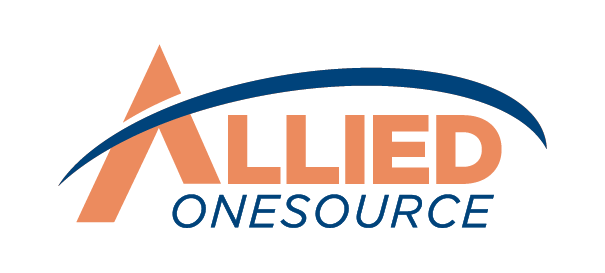6 Proven Strategies for Employee Retention
Are you facing difficulties retaining your team? Have you observed a rise in employees leaving their roles, taking on extra work on the side, or switching professions? This seems to be a common trend across industries.
Employers have always had their hands full, trying to keep employees happy. However, recent years have seen retention difficulties increase due to factors such as the pandemic, skill gaps, and the pressure of hustle culture. On top of that, employees are placing greater emphasis on job security amidst all the changes brought on by new technology.
With traditional strategies often falling short, companies are compelled to reassess their strategies and establish new methods suited to their workforce's changing needs and expectations. Let's delve into strategies to help you navigate these challenges effectively.
Realigning Strategies: Moving from Attrition to Retention
For decades, employee retention has been an ongoing challenge for major organizations with the cost of staff turnover steadily climbing. Annually, American businesses lose a staggering $1 trillion due to turnover, largely stemming from internal factors.1
This shows the need for organizations implementing retention strategies, caring for their employees, and managing economic downturns more effectively.
To develop an effective employee retention strategy, it's important to understand why employees leave. Forbes outlined five primary factors influencing employees' decisions:2
- No clear career path
- Stress or lack of resources
- Health and family matters
- Work/life balance
- Money
These factors highlight the complexity of employee retention, where various elements influence whether they stay or seek opportunities elsewhere.
In today's competitive business landscape, retaining employees is a strategic advantage. As companies vie for top talent, keeping current employees satisfied is key to success. Employee retention isn't just about maintaining staff numbers. It's also about securing an asset that drives productivity, innovation, and company culture.
6 Effective Techniques for Employee Retention
In a job market where skilled workers are highly sought after and job changes are common, organizations must prioritize retaining their talent pool.
1. Provide avenues for professional advancement.
LinkedIn's survey found that 94 percent of employees would prefer to stay at a company longer if it actively invested in their learning and development.3
Employee turnover resulting from limited learning opportunities represents a particularly detrimental form of attrition. Why? Because employees who actively seek out learning opportunities typically possess a curious disposition, they often contribute significantly to the organization.
These employees are engaged and sharp, bringing valuable skills and insights to their roles. They are often the ones who are eager to take on challenges and find creative solutions. If they cannot find avenues for growth within their current organization, they might look for opportunities elsewhere.
2. Make sure managers aren't driving away good employees.
You've probably heard the saying, "People leave managers, not companies." The effectiveness of management directly impacts employee engagement. This also affects their likelihood of remaining with your organization.
So, what exactly challenges employees about their managers? Obvious issues and even subtler reasons include:
- Showing favoritism
- Making unwelcome advances
- Issuing informal threats
- Feeling a lack of opportunities for growth
- Not feeling valued
- Experiencing excessive supervision
How can you and your managers address these concerns proactively?
You don't need to read minds to understand how your employees feel. Regularly ask for feedback through anonymous surveys or one-on-one meetings. Encourage honest opinions and show that you value their input. But be careful how you react - if you dismiss employee feedback, they may hesitate to share again in the future. Listen openly and respond positively to build trust and open communication.
3. Ensure your employees feel valued and acknowledged.
According to a Gallup study, 65 percent of individuals report feeling unappreciated in their workplace.4 One potential reason for this disconnect is "emotional stinginess." It leads to turnover, especially when combined with overwork and high pressure. Signs include withdrawal, lack of enthusiasm, and disengagement.
For employee appreciation efforts to be effective, they must be regular, genuine, and natural. To enhance employee appreciation, it's essential to establish a culture of recognition rather than attempting to gamify the process with a point-based system.
- Promote managers and employees to create personalized messages for their colleagues, recognizing their achievements and explaining their importance.
- Share these acknowledgments openly during face-to-face meetings or on internal platforms accessible to all employees.
- Establish yearly awards ceremonies to honor recognized employees with peers and senior leadership.
- Ensure that celebrations and rewards align with the behaviors the company aims to promote as integral to its organizational culture.
4. Don't make employees feel overly burdened or stressed by their workload.
Overworking employees is a short-sighted strategy that fails to consider the long-term impact. Additionally, it's not a wise managerial approach. It risks employee health, productivity, and undermines satisfaction and increases turnover costs.
To tackle this issue, implement measures to reduce workload and manage stress. Distribute tasks evenly, set realistic deadlines, and ensure adequate resources and support. Cultivate a culture that prioritizes work-life balance and fosters open communication, making employees feel supported and less overwhelmed.
Another strategy is to encourage the use of vacation time to prevent burnout. Workers hesitate to take time off because of workload concerns or fear of falling behind. But if you create an environment where managers actively promote the use of paid time off, it provides employees guilt-free breaks to recharge.
5. Promote employee welfare.
Amidst rising living costs, struggles in personal lives, and ongoing uncertainties, it's no surprise that nearly half of a company’s employees report burnout, with little change since the pandemic peak.5
While ensuring employees have manageable workloads, transparent communication and a positive corporate culture are important tools for combating burnout, employers can take added measures to support employees' mental and physical health.
Implementing wellness programs and team-building activities can further contribute to employees' well-being. Offering perks such as wellness reimbursements for gym memberships or massages, insurance coverage for therapy and mental health treatment, and access to digital wellness or meditation platforms can help employees feel more restored.
Additionally, organizing team-building activities, such as off-site retreats, group outings, or virtual team challenges, fosters camaraderie and strengthens interpersonal connections, promoting a supportive and cohesive work environment.
Read More: 9 Wellness Initiatives for a Vibrant and Energized Workforce
6. Review and reevaluate their compensation and benefits.
One of the most effective methods of maintaining high levels of employee retention is providing competitive compensation and benefit packages. Employees seek to be valued and fairly compensated for their contributions, so employers must offer competitive salaries, bonuses, and incentives to enhance employee satisfaction.
In addition to monetary rewards, employers should also consider providing comprehensive benefits including health insurance, retirement plans, paid time off, and sick leave. These benefits contribute to employees' well-being and instill a sense of security and care from their employer.
Companies must regularly assess and adjust compensation packages to ensure they remain competitive within their industries. Conducting market analyses helps set salaries that are on par with or above industry standards, demonstrating a commitment to fair compensation practices.
It is important to emphasize that competitive compensation is about attracting new talent and retaining current employees. When employees feel valued through equitable pay and valuable benefits, they become loyal and committed to the organization, reducing the likelihood of seeking opportunities elsewhere.
The Solution Isn’t Higher Salaries; It’s Attentiveness to Employees’ Needs and Concerns
While money plays a role, it doesn't solve the retention puzzle entirely. Simply offering more money often fails to address why employees leave in the first place. Accepting a counteroffer isn't always the answer either. Employees crave recognition, growth opportunities, and chances to advance within their current role. When these needs aren't met, they consider other options.
Prioritizing employee well-being and job satisfaction is key. It not only cuts recruitment costs but also preserves vital institutional knowledge that new hires may struggle to replace. High employee satisfaction strengthens your employer brand, ensuring departing employees leave with positive experiences.
CREATE A POSITIVE WORK CULTURE THAT KEEPS TOP TALENT ENGAGED WITH ALLIED ONESOURCE
Is your industry facing a significant challenge with employee turnover? It's important not to let your most valuable team members slip away to competitors. At Allied OneSource, we have a proven track record of supporting companies in retaining their workforce.
We provide comprehensive solutions to help organizations build resilient and engaged teams. By implementing our strategies, businesses can create a positive work environment where workers can feel valued, motivated, and committed to their roles. Contact us today, and let's start building a winning team together!
References
1 “Do You Have This Trillion-Dollar Problem?” LinkedIn, www.linkedin.com/pulse/do-you-have-trillion-dollar-problem-dave-delaney-/. Accessed 14 Mar. 2024.
2 Hyken, Shep. “Beyond Money: The Real Reasons Employees Stay or Leave.” Forbes, www.forbes.com/sites/shephyken/2023/07/09/beyond-money-the-real-reasons-employees-stay-or-leave/?sh=403147d43d07.
3 LinkedIn. 2020 Workplace Learning Report. 2020, learning.linkedin.com/content/dam/me/learning/resources/pdfs/LinkedIn-Learning-2020-Workplace-Learning-Report.pdf.
4 “Employee Retention Practices That Every Company Should Have.” LinkedIn, www.linkedin.com/pulse/employee-retention-practices-every-company-should-have-rittmuller-og8ec/.
5 Smith, Morgan. “50% of Workers Are Burned out and “Productivity Paranoia” Could Be Making It Worse: “People Are Just Worn Down.” CNBC, 6 Oct. 2022, www.cnbc.com/2022/10/06/microsoft-50-percent-of-people-are-burned-out-at-work.html.










